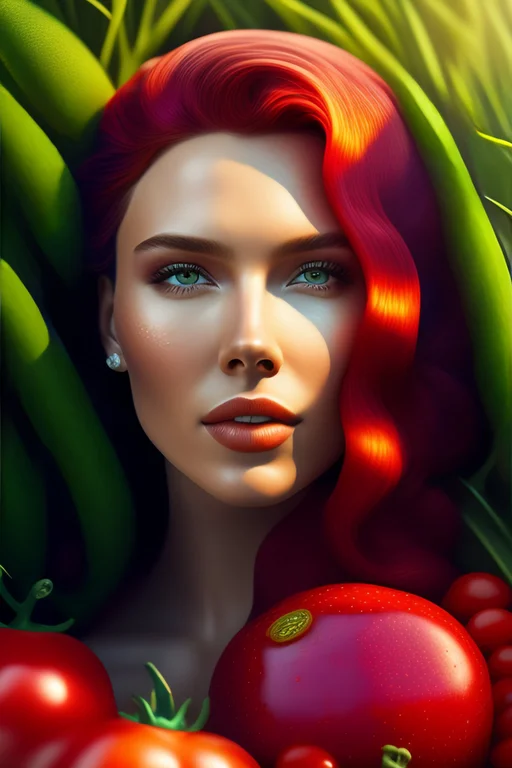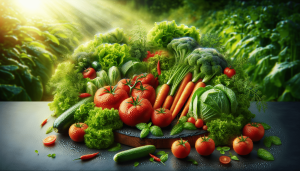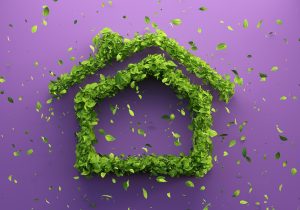Introduction
Art is an ever-evolving expression of human creativity, often drawing inspiration from the world around us. While traditional art forms have their own allure, a fascinating movement has emerged that celebrates the beauty and significance of nature’s creations—organic art. In this article, we embark on a journey into the realm of organic art, exploring its benefits, various types, techniques, notable artists, and providing insights on how to create your own organic masterpieces. Discover the enchantment of organic art as we delve into its captivating world.
Benefits of Organic Art
Environmental Sustainability: Crafting Masterpieces with a Green Thumb
In a world where environmental concerns are paramount, organic art shines as a beacon of sustainability. Unlike conventional art materials that often involve harmful chemicals and processes, organic art embraces natural and eco-friendly materials. By utilizing resources derived from nature, artists minimize their ecological footprint and contribute to a greener, more sustainable art practice.
Connection with Nature: Where Art Meets the Wild
Organic art offers a profound opportunity to connect with nature on a deeper level. By working with natural elements, artists tap into the inherent beauty and intricate details of the world around us. The act of creating art becomes a harmonious collaboration with nature, as artists draw inspiration from the earth, the sky, and everything in between. This connection fosters a sense of awe, reverence, and appreciation for the wonders of the natural world.
Unique and Unpredictable Outcomes: Celebrating Nature’s Serendipity
In the realm of organic art, unpredictability is embraced as a delightful and integral aspect of the creative process. Artists who work with organic materials find themselves dancing with the elements, surrendering control to the whims of weather, decay, and the passage of time. This surrender leads to mesmerizing and one-of-a-kind outcomes that cannot be replicated, infusing each artwork with a sense of spontaneity and an element of surprise.
Health and Well-being: Nurturing the Artist’s Soul
Engaging with organic art not only brings joy to the beholder but also nurtures the artist’s own well-being. The act of immersing oneself in the creative process, surrounded by natural elements, has been found to reduce stress levels, improve mood, and enhance overall happiness. It offers a therapeutic escape from the hustle and bustle of modern life, allowing artists to reconnect with their innate sense of wonder and find solace in the embrace of nature.
Different Types of Organic Art
Natural Materials and Found Objects: Unveiling the Beauty in Simplicity
Organic art begins with an appreciation for the beauty found in everyday natural materials and found objects. Artists can explore the vast array of possibilities offered by leaves, feathers, shells, stones, and other intriguing elements sourced from the environment. Through careful selection and arrangement, these materials transform into remarkable artworks that capture the essence of nature’s elegance.
Living Art and Eco-Installations: Breathing Life into Creativity
Living art and eco-installations take organic art to another level by incorporating living organisms as integral parts of the artwork. Artists create living sculptures using plants, moss, or other organic matter, allowing the artwork to evolve and grow over time. Eco-installations blend seamlessly with the environment, interacting with natural elements and eliciting a sense of harmony between art and the world in which it exists.
Earthworks and Land Art: Sculpting the Earth’s Canvas
Earthworks and land art redefine the boundaries of artistic expression by transforming natural landscapes into awe-inspiring masterpieces. Artists sculpt the land itself, shaping hills, carving trenches, or constructing monumental structures. These large-scale artworks integrate with the environment, blurring the line between art and nature, and leaving viewers awestruck by the immense power of both.
Techniques and Methods
Natural Dyes and Pigments: Colors from the Earth’s Palette
In the realm of organic art, natural dyes and pigments offer a captivating way to bring vibrant hues to life. Artists explore the rich palette provided by plants, minerals, and even insects, creating unique and nuanced colors that captivate the eye. By utilizing these natural pigments, artists not only infuse their artworks with a sense of authenticity but also contribute to the preservation of traditional dyeing techniques.
Organic Sculpture and Ceramics: Shaping Nature’s Mediums
Organic sculpture and ceramics embrace the inherent qualities of natural materials to create three-dimensional works of art. Artists mold clay, carve wood, shape stone, or experiment with other organic substances, allowing the characteristics of the materials to shine through in the final artwork. The resulting sculptures and ceramics possess a tactile and organic feel, inviting viewers to engage with them through touch and exploration.
Eco-Friendly Printing and Photography: Capturing Nature’s Essence
Even in the realm of printing and photography, organic art finds its place. Artists explore eco-friendly printing methods that utilize natural inks and papers, reducing the environmental impact of their creative process. In photography, the lens becomes a window into nature’s marvels, capturing the delicate balance of life and raising awareness about our responsibility to protect the environment.
Incorporating Plants and Living Organisms: Art Breathing with Life
One of the most captivating techniques in organic art involves the direct incorporation of plants and living organisms into the artwork. Artists create living sculptures, terrariums, or botanical installations, where plants grow and evolve alongside the artwork itself. This dynamic approach blurs the boundaries between art and life, reminding us of the interconnectedness of all living beings.
Famous Organic Artists
Andy Goldsworthy: Transient Beauty Sculpted by Nature’s Hand
Andy Goldsworthy is a renowned organic artist known for his ephemeral sculptures made from natural materials. He creates temporary works of art that blend seamlessly with the surrounding landscapes, embracing the transitory nature of life and inviting viewers to appreciate the fleeting beauty of the world around them.
Nils-Udo: Harmonizing Art and Nature
Nils-Udo is a German artist celebrated for his large-scale installations that utilize natural materials. His artworks often integrate with the environment, seamlessly blending with their surroundings and creating visually captivating experiences that inspire a deep connection with nature.
Agnes Denes: Art as a Catalyst for Environmental Consciousness
Agnes Denes is an artist who intertwines art, philosophy, and environmental activism. Her works address global issues such as climate change and deforestation, serving as powerful reminders of our impact on the planet and the need for sustainable practices.
Stan Herd: Masterpieces Cultivated on Earth’s Canvas
Stan Herd is known for his intricate land art, which involves shaping and planting crops to create stunning visual compositions that can only be appreciated from a higher perspective. His large-scale artworks transform fields into intricate canvases, capturing the imagination and celebrating the harmony between art and agriculture.
How to Create Organic Art
Gathering Materials from Nature: Exploring Nature’s Palette
To embark on your organic art journey, start by immersing yourself in nature. Take walks in forests, visit parks, or explore the beach. Observe the beauty and diversity of the natural world, keeping an eye out for intriguing natural elements. Fallen leaves, delicate feathers, weathered shells, and unique stones can all become sources of inspiration for your organic artworks.
Exploring Sustainable Art Supplies: Nurturing the Earth While Creating
To align your artistic practice with sustainability, explore sustainable art supplies. Seek out paints, brushes, and other tools made from natural or recycled materials. Look for eco-friendly varnishes and glues that minimize harm to the environment. By making conscious choices, you contribute to a greener artistic process and help protect the planet.
Embracing Experimentation and Chance: Surrendering to Nature’s Influence
One of the beauties of organic art lies in embracing experimentation and chance. Allow yourself to be guided by the elements and the unpredictability of natural processes. Adapt and modify your initial ideas as the creative journey unfolds, and welcome the surprises that nature brings. Remember, the imperfections and unexpected outcomes often become the most captivating aspects of organic art.
Incorporating Organic Elements: Breathing Life into Your Art
To truly embody the essence of organic art, consider incorporating organic elements directly into your artworks. Embed leaves in a painting, use twigs to create texture in a sculpture, or integrate live plants into your installation. By merging nature with art, you infuse your creations with a sense of vitality and deepen the connection between your artwork and the natural world.
Conclusion
Organic art opens up a world of limitless possibilities, where the beauty of nature converges with human creativity. It offers us a chance to embrace sustainability, reconnect with the wonders of the natural world, and explore unique and unpredictable outcomes. From the simplicity of natural materials to the grandeur of land art, organic art showcases the power of collaboration between the artist and nature. So, unleash your creativity, embark on your own organic art journey, and let nature be your ultimate muse.
FAQs
Can anyone create organic art, or is it limited to experienced artists?
Organic art is not limited to experienced artists. It is open to anyone with a passion for nature and creativity. Whether you are an established artist or a beginner, you can explore and engage in organic art. The key is to embrace experimentation, connect with nature, and let your creativity flow.
Is organic art only suitable for certain art styles, or can it be applied to various forms of art?
Organic art can be applied to various art styles and mediums. Whether you prefer painting, sculpture, installation, photography, or any other form of artistic expression, organic art offers a fresh perspective and an opportunity to incorporate natural elements into your chosen medium. It’s about infusing your artwork with the essence of nature and exploring the unique possibilities that organic materials offer.
Do I need to have access to vast natural landscapes to create organic art?
While access to vast natural landscapes can provide unique opportunities, you don’t necessarily need expansive spaces to create organic art. Even in urban environments, you can find inspiration and gather materials from local parks, community gardens, or even your own backyard. Nature can be found in the smallest details, and organic art can be created wherever there is a connection with the natural world.
How can I ensure the longevity of my organic artwork?
Organic artworks are often subject to natural processes of decay and change. While some artworks may be temporary or ephemeral, you can take steps to preserve the essence and beauty of your creations. Consider using archival materials, protective coatings, or display methods that minimize exposure to environmental factors. Embrace the evolving nature of organic art and appreciate the transient beauty it embodies.
Can organic art be profitable, or is it more of a personal expression?
Organic art can be both a personal expression and a profitable endeavor. As the demand for eco-friendly and sustainable art grows, there are opportunities for organic artists to showcase and sell their works in galleries, exhibitions, and online platforms. Many individuals appreciate the uniqueness and beauty of organic art, making it a viable option for artists to share their creations with the world and potentially generate income.




